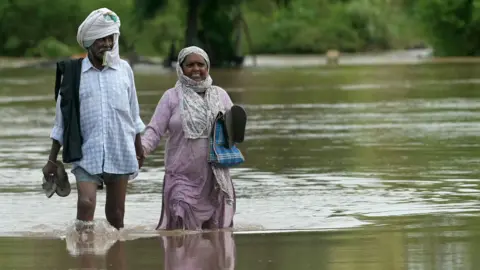In a devastating turn of events, Central Texas has experienced catastrophic flooding that has claimed the lives of at least 80 individuals, including 28 children, as torrential rain overwhelmed the Guadalupe River. Authorities are actively scouring affected regions, with hundreds of searchers deployed to locate individuals who remain unaccounted for following the disaster.
The heartbreaking toll has especially resonated within the communities around several summer camps, where ten girls were reported missing, two of whom were identified as just 8 and 9 years old. The catastrophic sequence started shortly after midnight on Thursday when the first flash-flood warning was issued, escalating to an emergency alert around 4 a.m. recommending residents and campers to seek higher ground as the river swelled dramatically by 22 feet (approximately 6 meters) in just three hours.
Experts and local authorities are now questioning whether staffing shortages in crucial positions at the National Weather Service offices hindered timely and effective emergency communication and response. Such vacancies exacerbated the difficulties in coordinating actions with local emergency management teams.
In the context of climate change discussions, scientists have noted that heavy rainfall events like this one are becoming increasingly common due to the heating of the planet driven by fossil fuel combustion. The connection between climate dynamics and extreme weather events poses significant concerns for future regulatory measures and community-level preparations for natural disasters.
As Texas continues to address the immediate aftermath of this tragedy, there is a renewed call for both an assessment of emergency service readiness and a comprehensive examination of community infrastructure resilience against the growing threat of severe weather events.





















